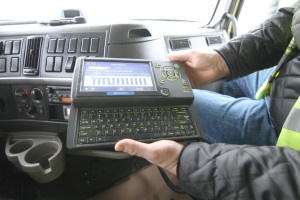 Just as we’ve seen from Drivers, some carriers are also struggling to embrace electronic logging devices (ELDs) and their potential to increase efficiency.
Just as we’ve seen from Drivers, some carriers are also struggling to embrace electronic logging devices (ELDs) and their potential to increase efficiency.
For carriers who see ELDs as a pesky compliance requirement, the impending mandate will prevent them from bending the rules and putting drivers at risk in an effort to make a few extra bucks.
But for carriers looking to use this technology as an efficiency tool, ELDs present an opportunity to improve business performance. Using the data to better understand a Driver’s capabilities and working with Drivers to come up with plans that best suit their wants and abilities will quickly turn the technology into an effective fleet management system for your business.
When utilized as a fleet management system, ELD technology offers several benefits to carriers:
It is vital that carriers understand that this technology serves to increase compliance, promote safety and allow for better administrative management. Some will attempt to use the devices to force drivers to stay on the road, which will have a negative impact on all parties.
Some fleets, for example, will look at ELDs and see it as guaranteed production: the driver has 12 hours to work in a day and we know exactly how long they’ve been on the road, so they’d better use every one of the hours no matter how tired they may feel or how dangerous the conditions.
Not only is this driver harassment, but this approach fails to maximize the value this technology can provide to an organization. If a carrier doesn’t invest the time to learn the power of ELDs and how they can benefit that organization, instead using it only to report hours and pressure drivers, it will be a very costly adjustment.
The ELD mandate is certain to change the business environment, but a simple change in how carrier’s choose to approach the technology could be the difference between a successful fleet management tool and a frustrating compliance requirement.
This is the third installment in a four-part series about ELDs and the potential impact of the impending mandate:
Part 1: ELD Mandate: Pesky Compliance Device or Efficiency Creation Tool?
Part 2: ELD Mandate: Impact on Shippers
Part 3: ELD Mandate: Impact on Drivers